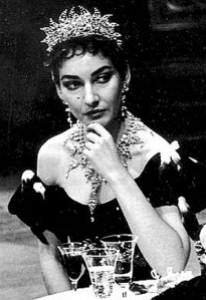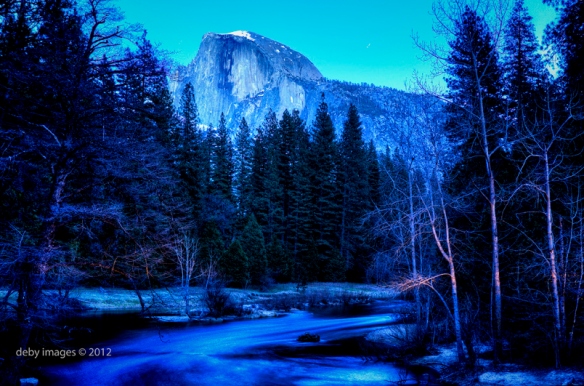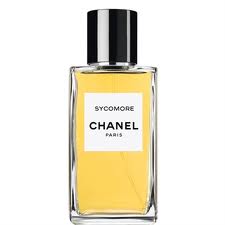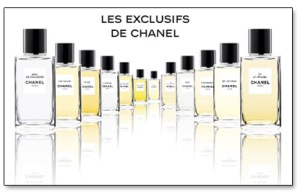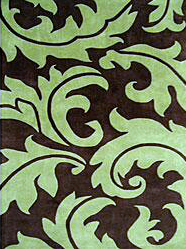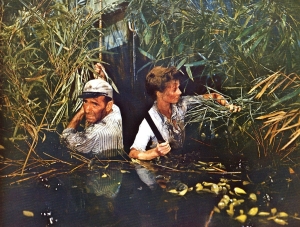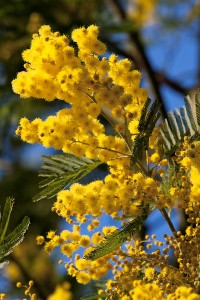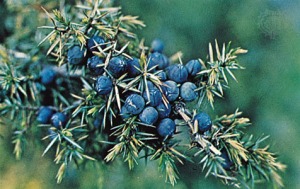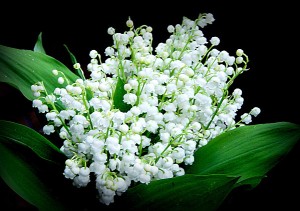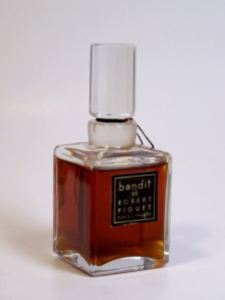The People v. Amarige – Case # 13-92745B
The Bailiff: “Oyez, Oyez, the Court is now in session. The Honorable Judge Charles Highblossom presiding. On the docket, The People v. Amarige, Case # 13-92745B. The charge is olfactory assault and battery. State your name and business before the Court.”
[A small, balding man rises]: “I am the District Attorney, Luke Sneering.”
[A tiny, dark woman rises]: “I am the Public Defender, Grace Hopeless-Causes, representing the Defendant, Amarige de Givenchy.” [She points to the table where Amarige sits. She is enveloped in the most luxurious white furs, drips gleaming diamonds, and wears the largest, frothiest hat this side of a royal wedding. The defendant’s chin is raised defiantly, her eyes staring straight ahead, but she nervously fingers her diamond choker.]
[The white-wigged judge bangs his gavel]: “The Prosecution may proceed.”
THE PROSECUTION:
[The D.A., Mr. Sneering]: “Ladies and gentlemen of the jury. We are here to convict Amarige, from the house of Givenchy, with being the most heinous perfume in the world. Countless have fallen prey to her horrors. You will hear testimony from asthmatics whom we will wheel in from the Intensive Care Unit where they landed after a mere whiff of her olfactory napalm. You will hear of her ubiquity in the 1990s, 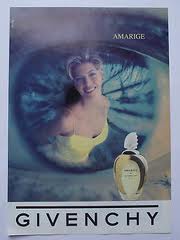 assaulting you from every magazine perfume strip, invading your home through your mailbox, until there was no escape. You will hear from Luca Turin, the perfume expert, on how she is “truly loathsome,” a perfume he rated one-star, and which he hates the most in all the world. And, in the end, you will do the right thing: you will convict her of assault and battery, even though what we really should be charging her with are crimes against humanity!
assaulting you from every magazine perfume strip, invading your home through your mailbox, until there was no escape. You will hear from Luca Turin, the perfume expert, on how she is “truly loathsome,” a perfume he rated one-star, and which he hates the most in all the world. And, in the end, you will do the right thing: you will convict her of assault and battery, even though what we really should be charging her with are crimes against humanity!
Let us start at the beginning. Amarige was let loose upon the unsuspecting public in 1991, a fruity-floral Frankenstein created by the legendary nose, Dominique Ropion, who really should have known better! Her parts, according to Fragrantica, consist of:
top notes are composed of fresh fruit: peach, plum, orange, mandarin, with the sweetness of rose wood and neroli. The floral bouquet, very intense and luscious, is created of mimosa, neroli, tuberose, gardenia and acacia with a gourmand hint of black currant. The warm woody base is composed of musk, sandalwood, vanilla, amber, Tonka bean and cedar.
In those long-ago days, as the perfume blogger The Non-Blonde states so well, there was no escape from her fumed tentacles. You didn’t have to buy it to wear it.
[You] didn’t have to: you could go into a public building, a friend’s home or get on a bus and emerge with your hair and clothes smelling of it. Amarige was so recognizable and obvious that even I, lover of assertive perfumes, couldn’t deal with it. Not to mention the fact that it’s so very peachy you could feel the juice dribble on your chin.
The Non-Blonde may have had a baffling change of heart on Amarige, but she was right when she said that “women who maintain the old habit of marinating themselves in Amarige should have their noses and sanity examined.” (Frankly, I think the Non-Blonde should have her sanity examined for her sudden appreciation of Amarige. No, time does not heal all olfactory wounds!)
I said at the start that what we should be charging Amarige with are crimes against humanity. The world agrees with me. I present as witnesses, some posters from Basenotes.
[The court security guards wheel in the witnesses that they have ferried over from the Intensive Care Unit. From their gurneys, they feebly lift their heads to take the vow to ‘tell the truth, the whole truth and nothing but the truth,’ so help them God. And then they testify.]
- Tuberose’s reputation has been damaged almost irrepairably by this most horrid affair. If I were her I would sue.
- Truly, truly awful. Radiates out to the orbit of Neptune. Causes asthma, retching and a stampede for the exit. Frightens children and pets, ruins dinner-parties, restaurant meals and plane journeys. Could be used to eradicate vermin from silos and warehouses. [..] Please people, stop buying this hideous juice so Givenchy will stop making it. It’s an abomination, a crime against humanity. I can’t understand why any woman would want to smell like this, or why her significant other would want to smell it on her. A chemical disaster of Chernobyl proportions.
- this Perfume is a migraine in a bottle. […] The absolute worst fragrance I’ve ever smelled.
- I own a bottle of it due to my initial attraction to its smell in small quantities. Wearing it, I feel nauseous and completely unable to eat anything. I tried to scrub it off in the shower but it won’t die. I haven’t eaten anything all day. I think this toxic odor could be useful as a diet aid.
- Horrible, HORRIBLE soapy smell broadcasting out to the planet at gigawatt levels. I made the mistake of spraying this onto my wrist and I thought I’d never be able to remove it. This smell made me feel nauseous and headachey.
The final witness comes from Fragrantica:
If I had to describe this perfume in one word it would be ‘haunting’ because it’s unpleasant and, like the eerie warnings written in blood on the walls, impossible to scrub off.
‘Blood on the walls.’ Blood on the walls, people! The eerie warnings come, in part, from tuberose, one of the most indolic flowers around. What is an idole, you ask? I draw your attention to Exhibit 3, the Glossary of perfume terms. It is something found naturally in many heady, white flowers — like tuberose. In excessive amounts, it can lead to a feel of extreme full-blown, over-ripeness. In cases of fragrances like Amarige, it can turn to an aroma of sourness, even cat litter feces, plastic flowers, urine, garbage heaps of rotting fruit, or all of the above. At best, Amarige is a fetid, rotting stinker that will turn from over-blown flowers to pure sourness and cat urine. At worst, it will choke up your airways, prevent all breathing and render you utterly unconscious. All in just 2 small whiffs.
You don’t believe me, I can see it in your eyes. Well, we shall prove it to you. Guards! Bring in the testers!”
[The guards set up two, tiny canisters at each end of the room. The jury shifts in their chairs nervously. A cordon of security blocks the doors. The District Attorney dramatically puts on a giant gas mask, akin to those used by soldiers in the first Persian Gulf War when there were fears of Saddam Hussein using chemical warfare — or Amarige — against American troops. Mr. Sneering points to the guards and nods.
Pfft. Pfft. Pfft.
Three small whiffs of scent are released from each of the two canisters. White flower after white flower suddenly fills the room. They flit here, they flit there. They are omnipresent. There is a smell of orange, orange blossom, more orange blossom, and still more. It spreads its powerful molecules around the room like a carpet unfurling a wave. Little spectres of happy yellow mimosa flowers dance along the orange carpet. There is a shadow of some silken amber rising up, peeking its eyes above the wave of orange. Peach makes an appearance, adding to the orange haze filling the room and cocooning the white ghosts of tuberose and gardenia. The powerful ghosts dance merrily up to the District Attorney and punch him in his gas-masked nose. He falls back, but rises with a glare.
There is an audible gasp. A woman in the far back of the visitor’s gallery clutches her throat and gasps for air. Juror #4 faints completely. Jurors #6 and #9 have a look of rapt enchantment and glazed joy on their faces, much to the disgust of the District Attorney who sneers at them. In her seat, Amarige smiles faintly. With an almost imperceptible flick of her dainty chin, she tells the ever-growing, large white ghosts of tuberose and gardenia to move near Juror #5 who told of her upcoming wedding in Voir Dire. They move and the Juror suddenly sits up straighter in her chair, dreams of her wedding day and of Amarige trailing behind her in a billowing cloud of white.
The Jury Foreman has been watching these proceedings with unease. When Juror # 2 keels over beside him, begging for medical help and saying she is dying, he starts to back away. Quietly, he inches towards the door and then flees outright, only to head straight into a wall of security. The gas-masked police officers grimly shake their heads. He looks at them pleading. “I can’t take it any more. Get me out of here,” he whispers. “It’s in my nose, it’s burning my skin. There is so much fruit all of a sudden. I’m surrounded by peaches and a whiff of plum. It’s cloying, synthetic and artificial. And it’s covering every inch of me, like fruited animals devouring my skin. I need a shower. Please, have mercy.” They sympathetically shake their heads again and drag him, kicking and screaming, back to his chair.
The Judge has had enough of these theatrics. He orders medical attention for the gasping or collapsed bodies, lying crumpled like rag dolls throughout the room. He orders all the windows opened and the room to be fumigated before the court will reconvene the next day. He contemplates also ordering psychiatric evaluations for those jurors who had beatific, hypnotized, enraptured smiles on their faces, but decides he cannot seem biased.
The next day, the court reconvenes and the District Attorney resumes his case.]
“Ladies and gentlemen, I apologise for subjecting you yesterday to the horrors of Amarige. But, I had to give you the chance to decide for yourself. The People’s case will conclude with our expert, Mr. Luca Turin, the most famous perfume critic in the world. Before you is Exhibit 4, an excerpt from his book with Tania Sanchez, Perfumes: the A-Z Guide. Note the categorization of Amarige as ‘Killer tuberose.’ Killer. Not extreme but ‘killer.’ The one-star review reads as follows:
We nearly gave it four stars: the soapy-green tobacco-tuberose accord Dominique Ropion designed for Amarige is unmissable, unmistakeable, and unforgettable. However, it is also truly loathsome, perceptible even at parts-per-billion levels, and at all times incompatible with others’ enjoyment of food, music, sex, and travel. If you are reading this because it is your darling fragrance, please wear it at home exclusively, and tape the windows shut.
Ladies and gentlemen, the People rest their case.”
THE DEFENSE:
[The Public Defender, Grace Hopeless-Causes, rises and speaks]: “Ladies and gentlemen of the jury, I am here for one reason and one reason only. To represent the shamed, silent, closeted minority of women who adore Amarige and feel she has been most unjustly accused of crimes against perfumery! She has been vilified for far too long and it’s time for the Amarige lovers to defend her!
The weight and power of Luca Turin’s reputation has added the final, unjust nail in Amarige’s coffin. It is not tuberose who should sue Amarige, but Amarige who should sue Luca Turin for defamatory libel!
Don’t believe the District Attorney. He has presented only one, very slanted, side to the story. Did you note how he had only one witness from Fragrantica? Why is that, do you think? I’ll tell you why: because that was the sole, truly harsh review of Amarige. He didn’t tell you of all the others which spoke of the joy, the happy, dancing aura of Amarige, the image of beautiful wedding days, or posts writing of “sumptuous” finishes, of “sophistication” and “class.” There is no mention of how it is addictive, of how you can’t stop sniffing your wrists, of how intensely feminine it can make you feel.
And there is not a word about how it can drive men wild.
No, the District Attorney has presented a very lopsided, distorted picture of Amarige. Even when he quotes Luca Turin, he leaves out the words of his co-author, Tania Sanchez, who wrote in that same book:
Amarige is a genius work of perfumery, utterly recognizable, memorable, technically polished and spectacularly loud.
The D.A. quickly brushed over how they wanted to give it four stars. FOUR. And there is not a peep out of him over the fact that the very book he quotes as expert opinion actually lists Amarige in their top 10 BEST list at the back! It is in their 10 Best Loud Perfumes list, next to the 5-star Fracas, 5-star Angel, and the 5-star Lolita Lempicka perfumes. Strange for a perfume that Mr. Sneering and Luca Turin would have you believe is a crime against perfume humanity, no?
 Yes, Amarige is loud and a diva. Yes, one big squirt can blow your head off. But no-one ever said you should bathe in it, for heaven’s sake! Plus, don’t let the opening blast fool you. Amarige has average sillage and longevity. After the first ten minutes, it can fade to a much tamer level. If you don’t believe me, read Fragrantica, Basenotes or MakeupAlley, and see similar comments for yourself.
Yes, Amarige is loud and a diva. Yes, one big squirt can blow your head off. But no-one ever said you should bathe in it, for heaven’s sake! Plus, don’t let the opening blast fool you. Amarige has average sillage and longevity. After the first ten minutes, it can fade to a much tamer level. If you don’t believe me, read Fragrantica, Basenotes or MakeupAlley, and see similar comments for yourself.
To all those who have had asthmatic attacks as a result of encounters with Amarige, I apologise. She apologises. Truly. But the same thing could happen from Lolita Lempicka, Angel or a whole host of perfumes. Why have they not been brought up on charges? Why does Luca Turin adore and worship the brilliance of Angel — a scent which many have compared to toxic nerve gas — but not the admittedly “genius,” “technically polished” masterpiece of Amarige? And, in all cases, isn’t it the fault of the wearers who spray on too much? Blaming Amarige for medical injuries triggered by over-use is akin to blaming a car manufacturer for accidents that may arise from someone texting while driving.
Where we concede and confess fully is the charge that Amarige is a diva. Yes. Yes, she is. Amarige is Maria Callas, the legendary opera singer, taking center stage under the bright white lights, and showered with diamonds by billionaires like Aristotle Onassis who loved her more than he ever did Jackie O. Amarige is not meant to be a simpering, quiet wallflower, sitting in the corner, awaiting a man to ask her to dance. She will push her way to the center of the floor and dance by herself, mesmerizing a room — public opinion be damned!
Amarige is Maria Callas, the legendary opera singer, taking center stage under the bright white lights, and showered with diamonds by billionaires like Aristotle Onassis who loved her more than he ever did Jackie O. Amarige is not meant to be a simpering, quiet wallflower, sitting in the corner, awaiting a man to ask her to dance. She will push her way to the center of the floor and dance by herself, mesmerizing a room — public opinion be damned!
As for the charge that she is a cloying monster with some potentially synthetic undertones, we plead the Fifth. Even if true, and we are not saying that it is, many other perfumes are too. And, yet, do you see them in this courtroom? Speaking only for myself, I do not find Amarige to be synthetic. I think she is exactly what Givenchy and Dominique Ropion meant for her to be. As Fragrantica explains:
The name of the perfume ‘Amarige‘ is an anagram of the French word ‘Mariage.’ That is why this fragrance is as intensive as a strong feeling, merry, juicy and unforgettable as a moment of happy mariage. It is so opulent and floral that it seems like its composition includes all the beautiful flowers that exist in the world.
The Amarige woman is graceful, playful and charming, a real French woman in love. She radiates joy and gives a happy smile.
Despite her opulence and diva status, Amarige can be a cheap date. You can find a 1 oz bottle on Kohl‘s for $50 or on Sephora for $49. A 1.6 oz bottle costs $67 on Sephora, and much less on eBay. Compare those prices to more reputable white floral or tuberose scents: Robert Piguet‘s Fracas starts at $95; while Frederic Malle‘s Carnal Flower starts at $230 at Barneys.
Whatever she is, I realise this is the most hopeless of all lost causes. Amarige’s reputation has been destroyed beyond all measure. I can sit here and talk to you about her lovely white femininity, her peach exuberance, that dry-down of spice and amber, and it will make no difference at all. There is simply no hope of restoring her good name.
But I make this plea to you, ladies and gentlement of the jury: do not let the perfume world’s easy, facile dismissal of Amarige influence you. They are not objective and they have followed Luca Turin like sheep. After all, they proudly admit their love for Fracas, another white flowers explosion that make people gasp for air.
Admittedly, Fracas is a much more elegant creature than the brazen hussy, Amarige. And, yes, hard as it is to believe, Fracas almost seems like almost a quiet, shy child in comparison. But are they really so different as to warrant Fracas’s triumphant twirl in the spotlight as a cult favorite and legend, while Amarige wilts in the wilds of guilty obscurity? Again, Fracas may be of slightly better quality and there is not a hint of anything synthetic about it. But it too is an over-blown indolic scent that can turn sour or lead to thoughts of rotting fruit. Amarige is more fruity than Fracas, true, but there is luscious peach, orange and amber in Hermès‘ sophisticated 24 Faubourg, after all.
Unlike 24 Faubourg’s sophisticated woman, however, Amarige is like a happy child, all yellow, orange and white dancing flowers, full of exuberance and femininity. It is not a scent for those who like discreet, quiet, unobtrusive fragrances. It’s not for those who can’t stand heady, narcotically powerful ones, either. And it is most definitely not for those who can’t bear white flowers.
But if you love Amarige, I beg of you: do not go quietly into that good night, hiding your face in shame and covering your scarlet letter, that “A” which marks you as an A-marige lover. Rise up and defend her name. Admit your folly and sins. Admit she is glorious. Don’t wear her only in the privacy of your own room with the windows duct-taped shut. And find her not guilty of crimes against perfumery!”
[The Public Defender sits down and the jury leaves for its deliberations. There is no word from them for three days. Then, finally, they return.]
THE VERDICT:
Hung jury.

